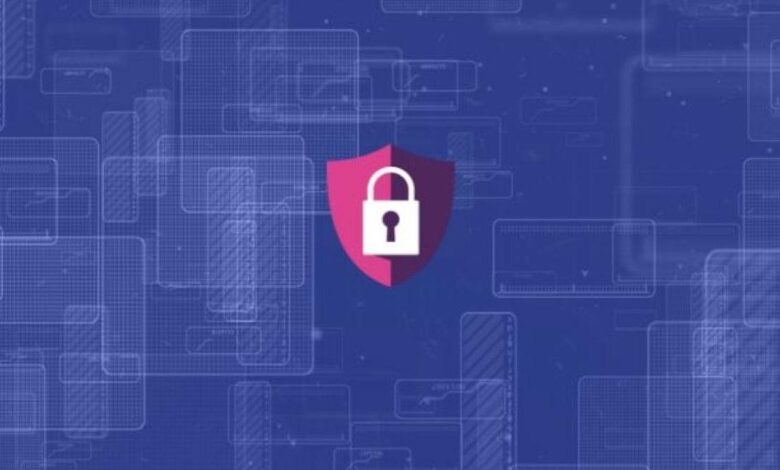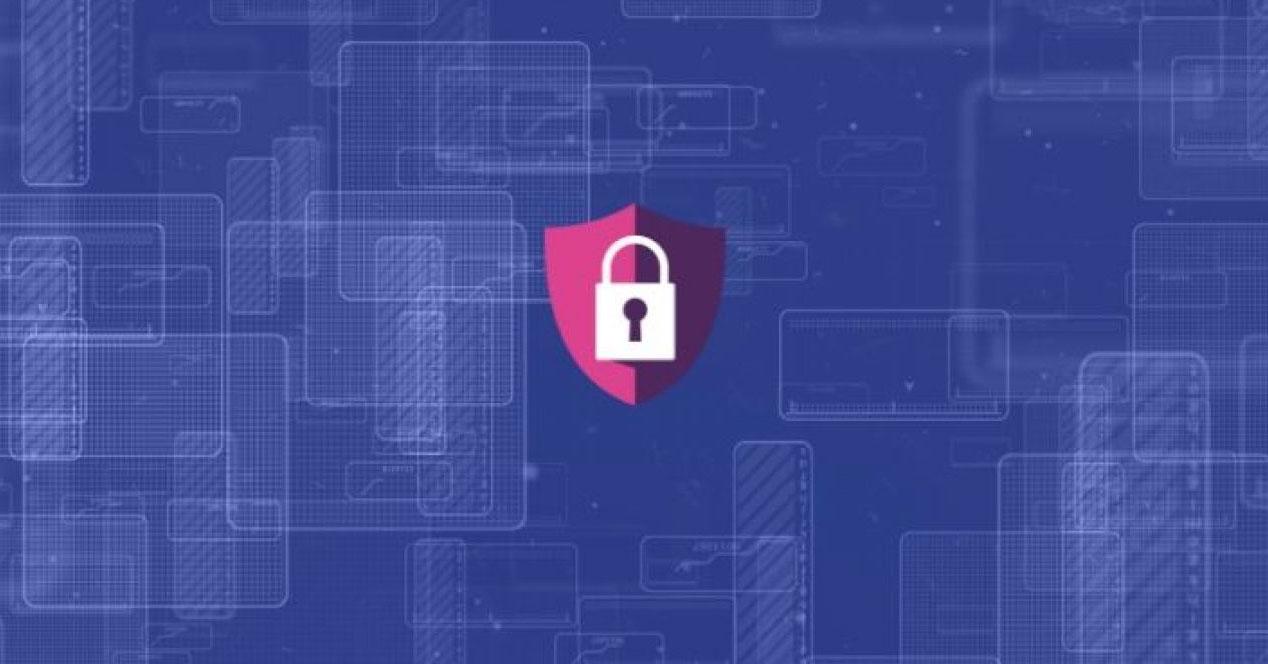
Password Steal Leads to Colonial Pipeline Cyber Attack
Password steal leads to colonial pipeline cyber attack – a chilling tale of how a seemingly simple password breach crippled a vital piece of American infrastructure. The May 2021 attack on the Colonial Pipeline, a major fuel distributor, wasn’t some Hollywood-style hack; it was a stark reminder of how vulnerable even the most critical systems can be to sophisticated cyberattacks (or, sometimes, surprisingly simple ones).
This incident exposed the terrifying consequences of inadequate cybersecurity practices and the devastating ripple effects felt across the entire nation.
The attack, orchestrated by the DarkSide ransomware group, started with the theft of employee credentials. From there, the attackers gained access to the pipeline’s network, deploying ransomware that effectively shut down operations. The ensuing panic caused gas shortages, soaring prices, and a national conversation about cybersecurity in critical infrastructure. The ransom paid – a staggering sum – only added fuel to the fire, highlighting the high stakes involved in these cybercriminal endeavors.
This wasn’t just a data breach; it was an attack on the nation’s supply chain, underscoring the need for robust cybersecurity measures across all sectors.
The Colonial Pipeline Attack

The May 2021 ransomware attack on Colonial Pipeline, a major fuel pipeline in the United States, serves as a stark reminder of the vulnerability of critical infrastructure to cyberattacks. This incident highlighted the far-reaching consequences of such attacks, impacting not only the company itself but also the national economy and public confidence.
Timeline of the Colonial Pipeline Ransomware Attack
The attack began on Friday, May 7th, 2021, when the DarkSide ransomware group infiltrated Colonial Pipeline’s systems. The ransomware encrypted critical data, effectively shutting down the pipeline’s operations. Colonial Pipeline immediately began its response, including isolating affected systems and contacting law enforcement. Over the following days, the company struggled to restore its systems, leading to significant disruptions in fuel distribution.
By May 12th, Colonial Pipeline announced it had begun a phased restart of its operations, a process that took several days to fully complete.
Initial Impact on Fuel Distribution
The immediate impact of the attack was a significant disruption to the supply of gasoline, diesel, and jet fuel across the southeastern United States. Gas stations in affected areas experienced shortages, with long lines forming at those stations that still had fuel. Panic buying exacerbated the situation, further depleting fuel supplies and leading to price increases. The disruption extended beyond gasoline, affecting various industries reliant on fuel transportation, including trucking, aviation, and agriculture.
The ripple effect was felt across the supply chain, highlighting the pipeline’s crucial role in the nation’s energy infrastructure.
Ransom Payment and its Implications
Facing significant operational losses and public pressure, Colonial Pipeline made the controversial decision to pay a $4.4 million ransom to the DarkSide ransomware group. This payment, while seemingly resolving the immediate crisis by facilitating the decryption of some data, raised serious concerns about the incentivization of future attacks. The payment also sparked a debate regarding the ethical implications of paying ransoms to cybercriminals, with some arguing it emboldens attackers and others maintaining it was a necessary measure to prevent further economic damage.
The FBI later recovered a significant portion of the ransom.
Immediate Economic Consequences
The Colonial Pipeline attack had immediate and substantial economic consequences. Beyond the direct financial losses incurred by Colonial Pipeline, including the ransom payment and operational downtime, the attack triggered widespread fuel shortages, leading to price spikes at the pump. This impacted consumers directly, increasing transportation costs for individuals and businesses. Furthermore, the disruption to the supply chain caused delays and increased costs for various industries, contributing to broader economic uncertainty.
The attack also highlighted the significant hidden costs associated with cybersecurity breaches in critical infrastructure, including reputational damage and loss of public trust.
Password Theft as the Initial Vector
The Colonial Pipeline ransomware attack, while devastating in its impact, began with a seemingly small breach: the theft of a single employee’s password. This seemingly insignificant event highlights the critical vulnerability of relying on weak or easily compromised passwords to protect critical infrastructure. Understanding the methods used to obtain this password, the vulnerabilities exploited, and the techniques employed to crack it is crucial to preventing similar attacks in the future.The initial compromise likely leveraged a combination of well-known attack vectors and readily available tools.
The attackers probably didn’t stumble upon the password accidentally; instead, they systematically targeted the pipeline’s systems using a multi-pronged approach.
Methods of Password Theft
The attackers likely employed a combination of techniques to steal the initial password. Phishing emails, designed to look legitimate and trick employees into revealing their credentials, are a common and highly effective method. These emails might have contained malicious attachments or links leading to fake login pages designed to capture usernames and passwords. Another possibility is a brute-force attack against a less secure system, potentially exploiting weak password policies or vulnerabilities in the network perimeter.
Finally, credential stuffing, where previously leaked credentials from other data breaches are used to attempt logins on different systems, could have also played a role. The success of any of these methods hinges on the weakness of the targeted password itself.
Exploited Vulnerabilities
Several vulnerabilities could have been exploited to gain access to the pipeline’s systems. These could include outdated or unpatched software with known security flaws, weak or default passwords on network devices (routers, firewalls), and inadequate access controls allowing unauthorized access to sensitive systems. A lack of multi-factor authentication (MFA) would have significantly weakened the pipeline’s defenses, making it easier for attackers to gain access even if they only obtained a single password.
Furthermore, the presence of unmonitored or poorly configured remote desktop protocol (RDP) connections could have provided an easy entry point for attackers.
Common Password Security Weaknesses
The stolen password likely suffered from one or more common password security weaknesses. These could include using easily guessable passwords (such as “password123” or variations of the employee’s name or birthday), reusing the same password across multiple accounts, or failing to use strong, complex passwords with a mix of uppercase and lowercase letters, numbers, and symbols. The absence of a robust password policy enforced by the company likely exacerbated these issues.
The use of easily cracked passwords represents a fundamental failure in cybersecurity hygiene, underscoring the importance of user training and robust security protocols.
Password Cracking Techniques
Several password cracking techniques could have been used to access the system, even if the initial password was not directly obtained. Brute-force attacks, which systematically try every possible password combination, are time-consuming but effective against weak passwords. Dictionary attacks, which use lists of common passwords and variations, are faster and more efficient against less complex passwords. Rainbow table attacks, which pre-compute hashes of common passwords, can significantly speed up the cracking process.
The attackers might have employed a combination of these techniques, leveraging readily available tools and resources to crack the password and gain access to the Colonial Pipeline’s network. The specific technique used would depend on the strength of the password and the resources available to the attackers.
The Role of Human Error
The Colonial Pipeline ransomware attack, while sophisticated in its execution, ultimately exploited vulnerabilities stemming from human error. A robust cybersecurity infrastructure is only as strong as its weakest link – the human element. Negligence, insufficient training, and susceptibility to social engineering tactics all played a significant role in enabling the attackers to gain access and disrupt operations.The attack highlighted the critical need for a multi-layered security approach that incorporates not only technological safeguards but also robust employee training and awareness programs.
Focusing solely on technological solutions without addressing the human factor leaves organizations vulnerable to attacks like the one experienced by Colonial Pipeline.
Examples of Potential Human Errors
Several potential human errors could have facilitated the Colonial Pipeline attack. These include the use of weak or reused passwords, failure to implement multi-factor authentication, and neglecting to update security software promptly. A single employee falling victim to a phishing email or clicking on a malicious link could have provided the initial access point for the attackers. Furthermore, a lack of vigilance in monitoring system logs and alerts might have delayed the detection of the intrusion, allowing the attackers more time to deploy ransomware and exfiltrate data.
Insufficient Employee Training and its Contribution to the Breach, Password steal leads to colonial pipeline cyber attack
Insufficient employee training significantly contributed to the vulnerability exploited in the Colonial Pipeline attack. Without comprehensive cybersecurity awareness training, employees may be unaware of the latest phishing techniques, social engineering tactics, and the importance of strong password hygiene. A lack of training can lead to employees inadvertently clicking on malicious links, opening infected attachments, or falling prey to social engineering scams, providing the attackers with easy entry points into the system.
Regular and up-to-date training on identifying and responding to phishing attempts, recognizing malicious websites, and understanding the importance of password security is crucial in mitigating such risks.
Hypothetical Scenario Demonstrating Social Engineering
Imagine an employee at Colonial Pipeline receives an email seemingly from their IT department. The email claims a system update requires immediate action and includes a link to download a “critical patch.” This email is a cleverly crafted phishing attempt. If the employee, lacking sufficient training in identifying phishing emails, clicks the link, they could unwittingly download malware onto their computer, providing the attackers with access to the company’s network.
This access could then be leveraged to move laterally within the network, ultimately leading to the encryption of critical systems and the deployment of ransomware. This scenario highlights how easily social engineering can compromise even well-protected systems if employees lack adequate training and awareness.
Best Practices to Prevent Human-Error-Based Breaches
Implementing robust security best practices is essential to prevent future breaches stemming from human error. This includes:
- Implementing and enforcing strong password policies, including the use of multi-factor authentication.
- Providing comprehensive and regular cybersecurity awareness training for all employees.
- Conducting regular security audits and penetration testing to identify vulnerabilities.
- Implementing robust security information and event management (SIEM) systems to monitor network activity and detect suspicious behavior.
- Establishing clear incident response plans to effectively manage and mitigate security incidents.
- Promoting a security-conscious culture within the organization, encouraging employees to report suspicious activities.
Technical Aspects of the Breach
The Colonial Pipeline ransomware attack, while stemming from a compromised password, involved sophisticated technical elements that allowed the attackers to cripple a critical piece of US infrastructure. Understanding these technical aspects is crucial for learning from the incident and improving cybersecurity practices. This section delves into the specific tools and techniques used, the vulnerabilities exploited, and the potential mitigation strategies.
Ransomware Used and Functionalities
The ransomware used in the Colonial Pipeline attack was DarkSide, a relatively new ransomware-as-a-service (RaaS) operation. DarkSide wasn’t just a simple file encrypter; it was designed to be highly disruptive. Its functionalities included encrypting files across a network, exfiltrating sensitive data before encryption (double extortion), and deploying sophisticated evasion techniques to avoid detection. DarkSide’s developers prioritized operational security, making attribution difficult and recovery complex.
The ransomware leveraged a combination of encryption algorithms and data exfiltration methods, making it particularly potent. Crucially, it targeted not only individual files but also critical system processes, leading to the complete shutdown of the pipeline’s operational technology (OT) network.
Encryption Methods Employed
While the precise encryption algorithms used by DarkSide in the Colonial Pipeline attack haven’t been publicly disclosed in detail, ransomware of this type typically employs strong, asymmetric encryption. This means that two keys are used: a public key for encryption and a private key for decryption. The attackers would have used the public key to encrypt the pipeline’s data, holding the private key to demand a ransom for decryption.
The strength of the encryption lies in the computational difficulty of deriving the private key from the public key. This makes brute-force decryption extremely challenging, even with significant computing power. The combination of strong encryption and data exfiltration significantly increased the pressure on Colonial Pipeline to pay the ransom.
Targeted Network Infrastructure Components
The attack primarily targeted the Colonial Pipeline’s operational technology (OT) network, responsible for controlling the physical aspects of the pipeline’s operation. This network is distinct from the information technology (IT) network used for administrative and business functions. The attackers likely gained initial access through a compromised Virtual Private Network (VPN) account, a common entry point for many ransomware attacks.
Once inside, they moved laterally within the network, identifying and encrypting critical systems and servers controlling pumping stations, flow rates, and other aspects of pipeline operations. The successful compromise of the OT network demonstrated a critical vulnerability in the segregation and security of these often less-protected systems.
Comparison of Cybersecurity Measures
The following table compares the strengths and weaknesses of different cybersecurity measures that could have mitigated the Colonial Pipeline attack. Each measure’s effectiveness is dependent on proper implementation and maintenance.
| Cybersecurity Measure | Strengths | Weaknesses | Relevance to Colonial Pipeline Attack |
|---|---|---|---|
| Multi-Factor Authentication (MFA) | Stronger authentication, reduces risk of password compromise | Can be inconvenient for users, requires careful implementation | Could have prevented initial access if implemented on VPN accounts. |
| Regular Security Audits and Penetration Testing | Identifies vulnerabilities before exploitation | Can be expensive and time-consuming | Could have uncovered the vulnerability exploited by the attackers. |
| Network Segmentation | Limits the impact of a breach by isolating different network segments | Can be complex to implement and manage | Stronger segmentation between IT and OT networks could have limited the spread of the ransomware. |
| Robust Backup and Recovery Systems | Allows for quick restoration of data in case of a ransomware attack | Requires regular testing and maintenance | A reliable backup system could have minimized downtime and the need to pay a ransom. |
| Employee Security Awareness Training | Educates employees about phishing and other social engineering tactics | Requires ongoing effort and reinforcement | Could have reduced the likelihood of an employee falling victim to a phishing attack. |
Post-Attack Response and Recovery
The Colonial Pipeline ransomware attack highlighted the critical need for robust incident response plans and effective recovery strategies. The immediate shutdown of the pipeline, a decision made out of an abundance of caution to prevent further damage, caused significant fuel shortages across the Eastern United States. The subsequent recovery process involved a complex interplay of technical remediation, legal considerations, and public relations management.Colonial Pipeline’s response involved several key steps.
First, they immediately isolated the affected systems to contain the ransomware’s spread. This involved disconnecting affected networks and servers from the internet and internal networks. This action, though disruptive, was crucial in preventing further damage and data exfiltration. Next, they engaged cybersecurity experts and forensic investigators to analyze the attack, identify the root cause, and develop a remediation plan.
This included recovering data from backups and restoring systems to a pre-attack state. Finally, they worked closely with law enforcement agencies to track down the perpetrators and potentially recover the stolen data. The company also initiated a public communication strategy to keep stakeholders informed of the situation and reassure the public about the safety and reliability of their fuel supply.
Colonial Pipeline’s Incident Response Plan Effectiveness
While Colonial Pipeline had an incident response plan in place, its effectiveness was arguably limited by several factors. The speed and severity of the attack overwhelmed some aspects of the plan. The reliance on older technology and a lack of sufficient multi-factor authentication likely contributed to the initial compromise. Furthermore, the decision to pay the ransom, while ultimately enabling a quicker recovery, set a concerning precedent and sparked debate regarding the ethics and effectiveness of this strategy.
The response, though ultimately successful in restoring operations, revealed weaknesses in their preparedness for such a large-scale cyberattack. The incident highlighted the importance of rigorous testing and regular updates to incident response plans to ensure they remain effective in the face of evolving threats. A more proactive approach to cybersecurity hygiene, encompassing regular security audits and penetration testing, could have potentially mitigated the impact of the attack.
Best Practices for Incident Response and Recovery
Effective incident response relies on several key best practices. A comprehensive incident response plan should be developed, regularly tested, and updated to reflect evolving threats. This plan should Artikel clear roles and responsibilities, communication protocols, and escalation procedures. Furthermore, robust security measures, including multi-factor authentication, strong password policies, regular software updates, and network segmentation, are crucial for preventing and mitigating cyberattacks.
Maintaining regular backups of critical data, stored offline and securely, is vital for quick recovery. Finally, collaboration with law enforcement and cybersecurity experts is essential for effectively addressing sophisticated cyberattacks. Regular security awareness training for employees is also vital to reduce the risk of human error, a common entry point for many attacks.
The Colonial Pipeline cyberattack, a stark reminder of the dangers of weak passwords, highlighted the critical need for robust security measures. Thinking about secure app development, I’ve been researching domino app dev the low code and pro code future and how these platforms might help build more secure applications. Ultimately, though, even the best development tools can’t compensate for simple password theft – a lesson learned the hard way by Colonial Pipeline.
Improved Cybersecurity Measures to Shorten Recovery Time
Several improvements to Colonial Pipeline’s cybersecurity posture could have significantly shortened the recovery time. Implementing robust multi-factor authentication across all systems would have made it significantly more difficult for the attackers to gain initial access. Regular penetration testing and vulnerability assessments could have identified and addressed weaknesses in their network security before they could be exploited. Investing in advanced threat detection and response technologies could have enabled quicker identification and containment of the attack.
Furthermore, improved network segmentation would have limited the spread of the ransomware to other critical systems. Finally, a more comprehensive cybersecurity awareness training program could have reduced the likelihood of employees falling victim to phishing or other social engineering attacks. These improvements, coupled with a more proactive approach to security, would have significantly reduced the impact of the attack and the subsequent recovery time.
Long-Term Impacts and Lessons Learned
The Colonial Pipeline ransomware attack served as a stark wake-up call for the energy sector and critical infrastructure providers globally. Its lasting effects extend far beyond the initial disruption of fuel supply, prompting significant changes in cybersecurity practices and regulatory landscapes. The attack highlighted the devastating consequences of inadequate cybersecurity measures and the interconnectedness of our digital and physical worlds.The attack forced a critical reassessment of cybersecurity investments and strategies across the energy sector.
Organizations realized that simply reacting to threats was insufficient; a proactive and robust approach was crucial. This shift involved not only upgrading technological defenses but also fundamentally altering organizational culture to prioritize cybersecurity awareness and training.
Changes in Cybersecurity Practices
Following the attack, many organizations within the energy sector implemented significant changes to their cybersecurity posture. This included increased investment in advanced threat detection systems, such as intrusion detection and prevention systems (IDPS) and security information and event management (SIEM) tools. Furthermore, there was a greater emphasis on endpoint security, including improved endpoint detection and response (EDR) solutions and enhanced patching protocols to address vulnerabilities quickly.
Many organizations also improved their vulnerability management programs, conducting more frequent and thorough vulnerability scans and penetration testing. The focus shifted from simply protecting the perimeter to securing the entire attack surface, including operational technology (OT) systems often overlooked previously.
New Regulations and Industry Standards
The Colonial Pipeline attack spurred regulatory changes and the development of new industry standards focused on improving cybersecurity in critical infrastructure. The Cybersecurity and Infrastructure Security Agency (CISA) increased its guidance and collaboration with private sector organizations, providing more resources and best practices. Several states also introduced legislation mandating stricter cybersecurity standards for critical infrastructure providers. While specific regulations vary, many focus on improving incident response planning, vulnerability management, and employee training.
Industry groups like the American Petroleum Institute (API) also revised their cybersecurity recommendations, emphasizing the need for proactive risk management and robust incident response capabilities. For example, the API developed updated standards emphasizing the implementation of multi-factor authentication (MFA) and improved network segmentation.
Recommendations for Improving Cybersecurity in Critical Infrastructure
The experience of the Colonial Pipeline attack underscores the need for a comprehensive and multi-layered approach to cybersecurity in critical infrastructure. A proactive strategy, rather than reactive, is essential.
- Prioritize vulnerability management: Regularly scan for vulnerabilities, prioritize patching critical systems, and implement robust vulnerability management programs.
- Invest in advanced threat detection: Implement and maintain advanced threat detection systems, including IDPS, SIEM, and EDR solutions, to detect and respond to threats in real-time.
- Implement robust access control: Utilize multi-factor authentication (MFA) for all users, including privileged accounts, and implement strong password policies and access control lists.
- Enhance incident response planning: Develop and regularly test comprehensive incident response plans that include communication protocols, recovery strategies, and collaboration with relevant agencies.
- Improve employee training and awareness: Invest in cybersecurity awareness training for all employees, emphasizing social engineering tactics and phishing prevention.
- Strengthen network segmentation: Isolate critical systems and networks to limit the impact of a breach and prevent lateral movement.
- Regularly conduct security audits and assessments: Independent security assessments help identify vulnerabilities and weaknesses in the organization’s security posture.
- Embrace a security-first culture: Cybersecurity should be integrated into all aspects of operations, from design and procurement to daily operations and maintenance.
Illustrative Scenario: A Hypothetical Attack on the US Power Grid: Password Steal Leads To Colonial Pipeline Cyber Attack
Imagine a scenario where a sophisticated cyberattack targets a major regional power grid in the United States, specifically focusing on the control systems managing electricity distribution in a densely populated urban area like Los Angeles. This attack, mirroring the Colonial Pipeline breach, begins with the theft of employee credentials through a phishing campaign targeting low-level employees responsible for maintaining Supervisory Control and Data Acquisition (SCADA) systems.The attackers, a highly organized group with advanced technical skills, gain access to the network using compromised credentials.
They don’t immediately launch a widespread disruption, instead opting for a more insidious approach. Over several weeks, they subtly manipulate the grid’s control systems, gradually reducing power output to certain substations without triggering immediate alarms. This slow degradation masks the attack, allowing the attackers to remain undetected for a considerable period.
Potential Consequences of the Attack
The consequences of such an attack would be catastrophic. A prolonged power outage in a major metropolitan area like Los Angeles would lead to widespread disruption across all sectors of society. Hospitals would face critical power shortages, potentially resulting in patient deaths and injuries. Transportation systems, including subways and traffic lights, would grind to a halt, causing massive traffic congestion and impeding emergency services.
Businesses would experience significant financial losses due to operational disruptions and data loss. Communication networks, heavily reliant on electricity, would also be severely affected. The resulting social and economic chaos could be immense, leading to civil unrest and a significant blow to national security. The economic impact could easily reach tens of billions of dollars, potentially eclipsing the costs associated with Hurricane Katrina.
Visual Representation of the Compromised System
Imagine a complex network visualization, similar to a city map, but instead of streets and buildings, it depicts the power grid’s infrastructure. Each substation is represented by a node, connected by lines symbolizing transmission lines. Initially, all nodes would glow a steady green, indicating normal operation. As the attack progresses, certain nodes begin to dim, their green hue fading to yellow, then orange, and finally red, signifying decreasing power output and potential instability.
The lines connecting these affected nodes would also flicker, reflecting the disruption in power flow. The overall visualization would depict a gradual degradation of the system, starting subtly and escalating to a critical state, highlighting the insidious nature of the attack.
Technical and Human Factors Contributing to the Attack’s Success
The success of this hypothetical attack hinges on a combination of technical and human vulnerabilities. Technically, the attackers exploited weak password security practices and vulnerabilities in the SCADA system’s software. Outdated security protocols and a lack of robust intrusion detection systems allowed the attackers to remain undetected for an extended period. On the human side, inadequate employee training on cybersecurity best practices, including phishing awareness, facilitated the initial credential theft.
Insufficient oversight and a lack of regular security audits also contributed to the attack’s success. The slow, gradual nature of the attack further masked its presence, delaying detection and response. This scenario highlights the critical need for robust cybersecurity measures, regular security audits, and comprehensive employee training programs within critical infrastructure organizations.
Ending Remarks

The Colonial Pipeline attack serves as a brutal wake-up call. It’s a cautionary tale highlighting the devastating consequences of neglecting cybersecurity, especially in critical infrastructure. The vulnerability exposed wasn’t some complex, unpatched software flaw; it was the human element – weak passwords and a lack of robust security protocols. While the immediate crisis passed, the long-term impacts, from regulatory changes to heightened security awareness, continue to resonate.
The lesson is clear: investing in robust cybersecurity isn’t just good practice; it’s a necessity for protecting our essential services and national security. The future of our digital world depends on it.
Helpful Answers
What type of ransomware was used in the Colonial Pipeline attack?
DarkSide ransomware was employed.
How long was the Colonial Pipeline shut down?
The pipeline was offline for several days.
Were any arrests made in connection with the attack?
While the initial attackers were never directly apprehended, law enforcement efforts have led to some arrests in related cases.
What was the total cost of the attack to Colonial Pipeline?
The total cost included the ransom payment, recovery expenses, and reputational damage – amounting to millions of dollars.
Did the ransom payment prevent further attacks?
No, paying the ransom doesn’t guarantee future security. DarkSide was eventually shut down, but other ransomware groups continue to operate.





